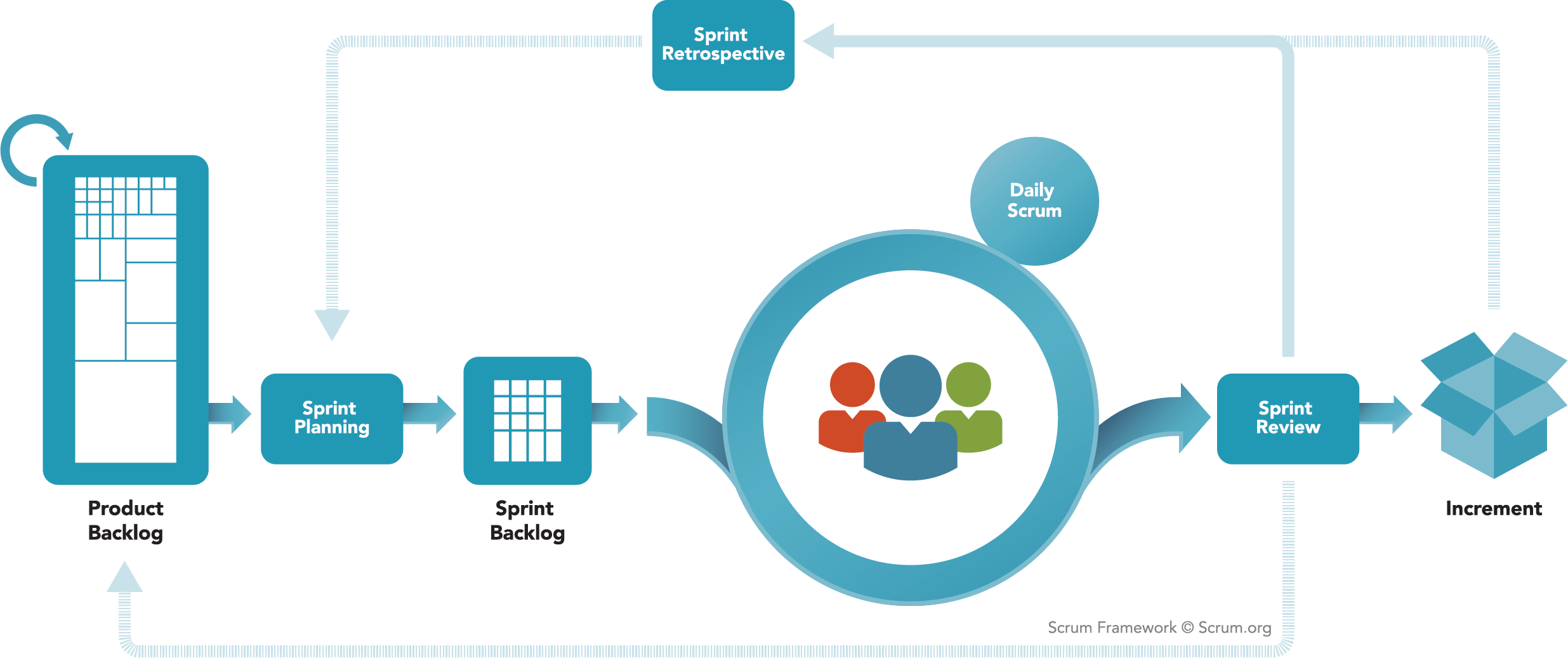Scrum Model
Introduction
If you are just getting started, think of Scrum as a way to get work done as a team in small pieces at a time, with continuous experimentation and feedback loops along the way to learn and improve as you go. Scrum helps people and teams deliver value incrementally in a collaborative way. As an agile framework, Scrum provides just enough structure for people and teams to integrate into how they work, while adding the right practices to optimize for their specific needs.

What makes up the Scrum Framework?
As already mentioned, there are accountabilities, events and artifacts that make up the Scrum Framework as well as other attributes that support Scrum. Read the Scrum Glossary to explore the terminology within Scrum or explore the key elements below:
- Scrum Accountabilities
- Scrum Events
- Scrum Artifacts
Scrum Accountabilities
The people on the Scrum Team:
Scrum Master - the person on the Scrum Team who uses their knowledge of Scrum to help the team and organization to be as effective as they can be; they do so by taking approaches like coaching, teaching, facilitating and mentoring.
Product Owner - the person on the Scrum Team who makes sure that the team is creating the most valuable product they can create.
Developers - the people on the Scrum Team who work together to create the product.
Scrum Events
Events that create regularity and minimize other meetings.
Sprint - short cycles of one month or less, during which the work is done; the Sprint contains all of the other Scrum events; a new Sprint starts immediately after the conclusion of the previous Sprint.
Sprint Planning - event dedicated to planning out the work that will take place during the Sprint.
Daily Scrum - event held every day where the Developers inspect the progress toward the Sprint Goal, uncover anything that may be getting in their way and adapt accordingly.
Sprint Review - event held at the end of the Sprint where the Scrum Team and key stakeholders review what was accomplished in the Sprint and what has changed in their environment; next, attendees collaborate on what to do next.
Sprint Retrospective - the Scrum Team gets together during this event to talk about how the last Sprint went and identify the most helpful changes to improve their effectiveness.
Scrum Artifacts
The plans and work which are transparent and can be inspected allowing for future adaptation; Each artifact has its own Commitment which helps the team understand if they are making progress.
Product Backlog - an evolving, ordered list of what is needed to improve the product; it is the single source of work undertaken by the Scrum Team.
Commitment: Product Goal - the target the team plans against.
Sprint Backlog - a highly visible list of work that is the Developer’s plan for the Sprint, which may evolve as they learn.
Commitment: Sprint Goal - the single objective of the Sprint.
Increments - small pieces of work that serve as concrete stepping stones toward the Product Goal. You can deliver as often as needed during the Sprint and are not limited to only one release per Sprint.
Commitment: Definition of Done - the description of what it takes for an Increment to be considered complete.